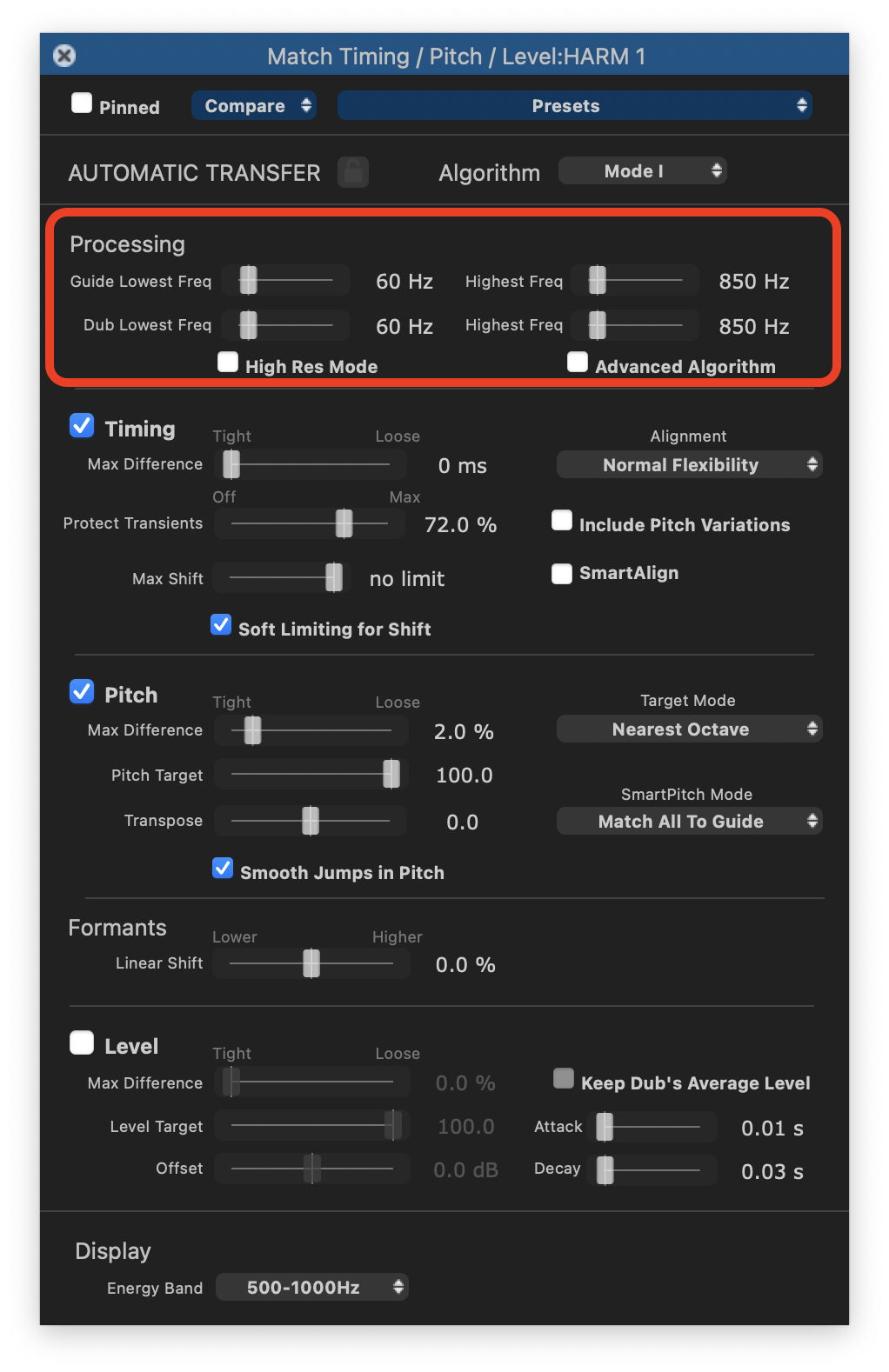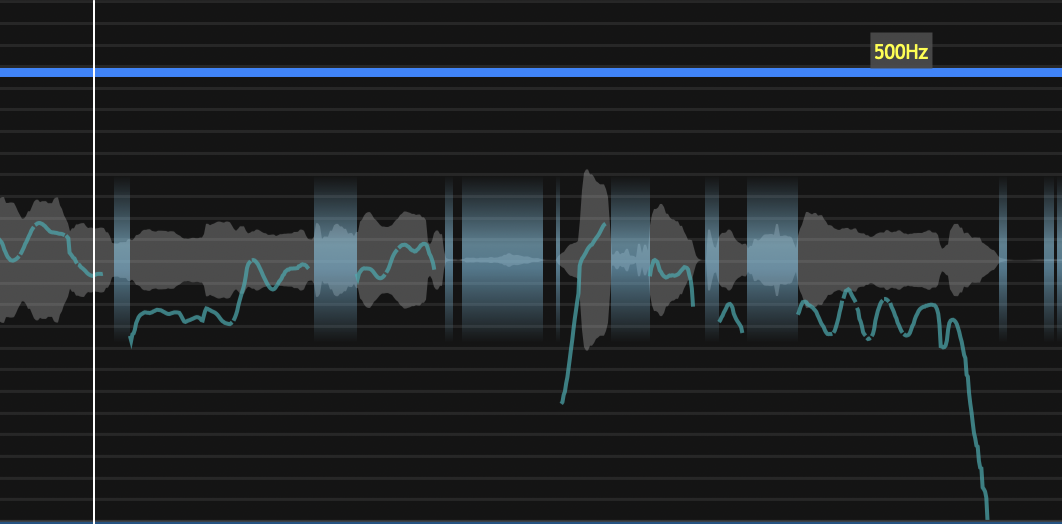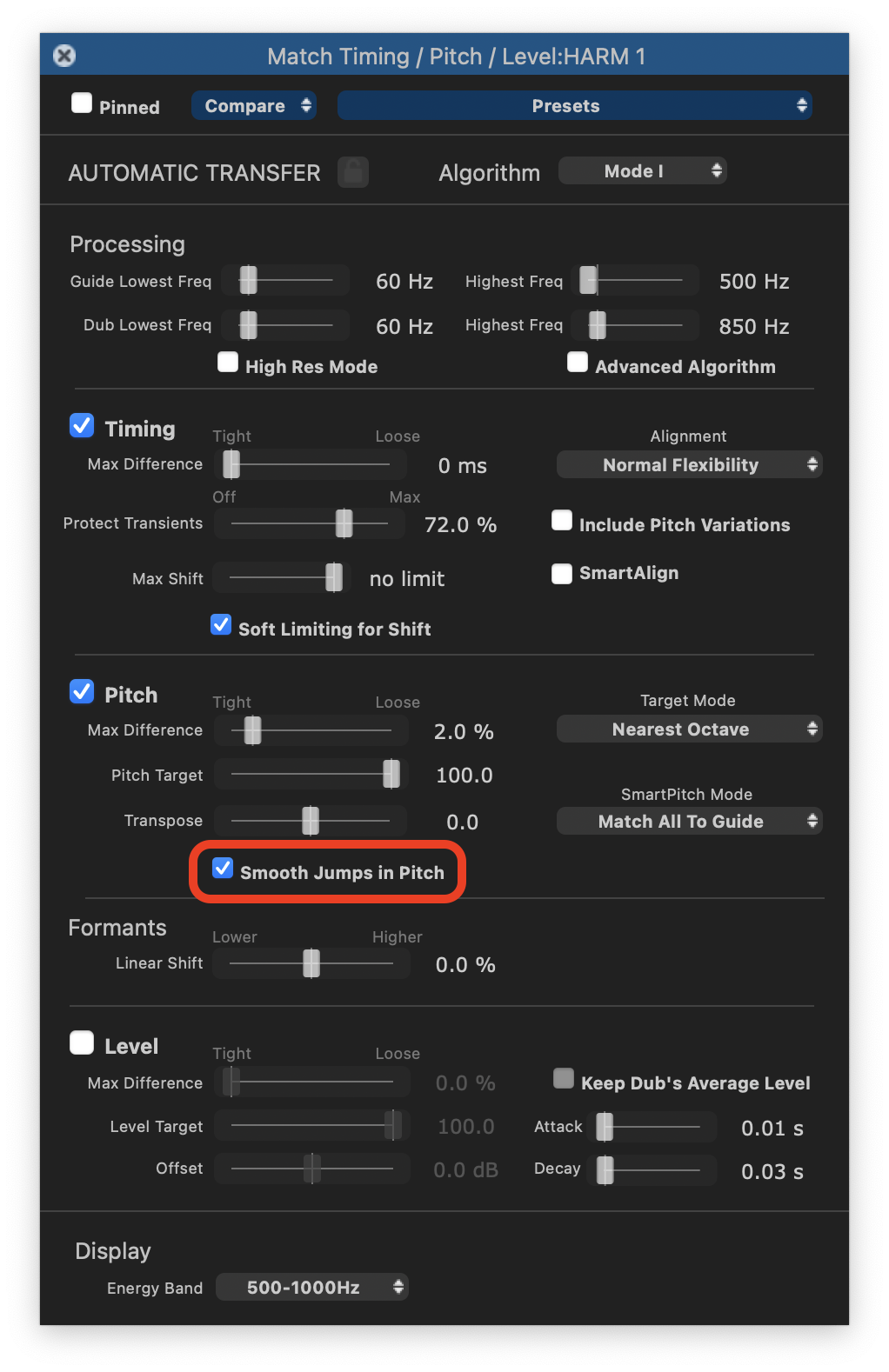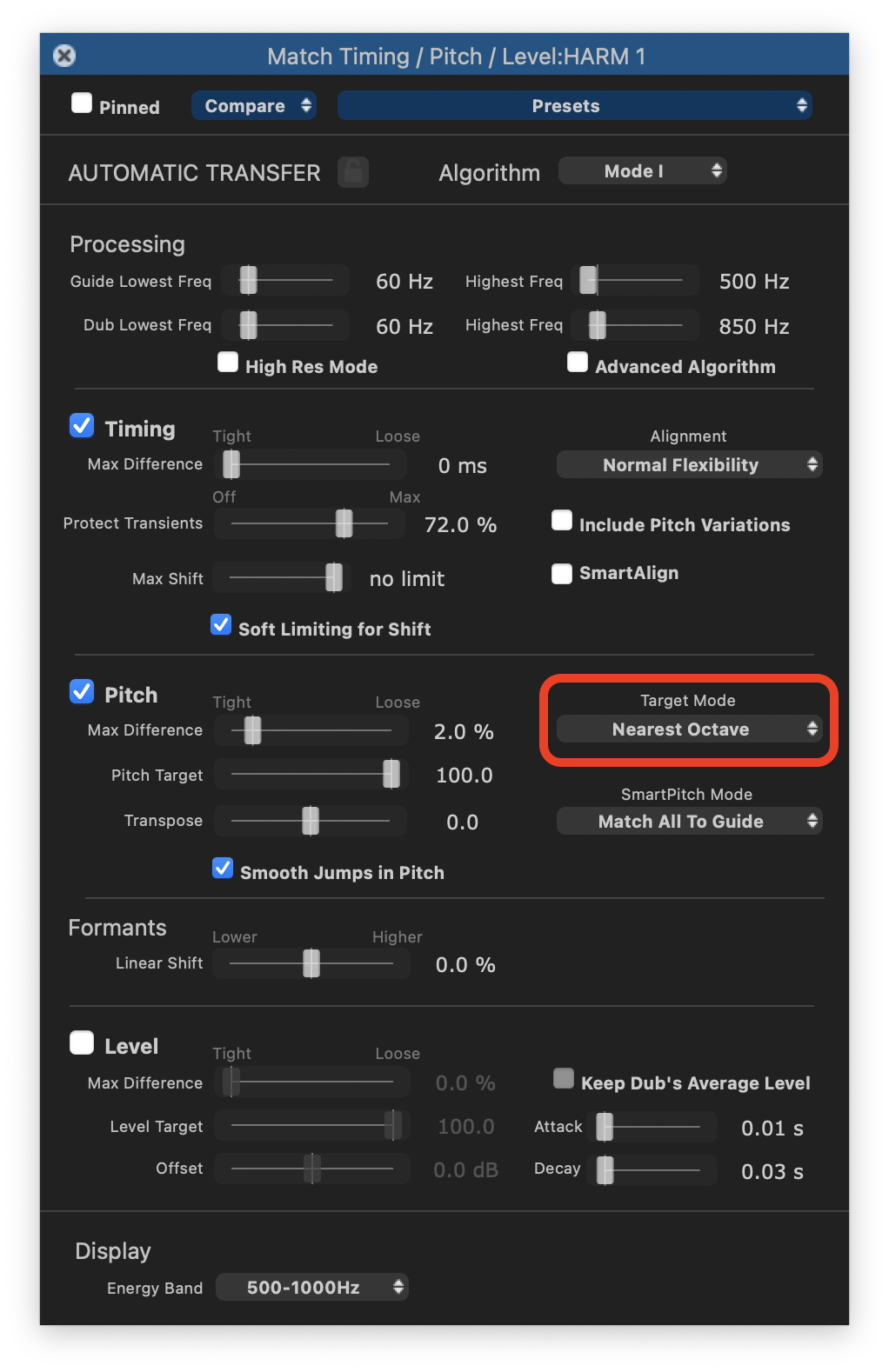Pitch differences or roughness
Vocal signals with very low or rough pitch, or even bass guitars and flutes can be used successfully as inputs to Revoice Pro and be automatically aligned or manually tuned.
You can also prevent transferring octave jumps that occur in one signal to another signal that doesn't have them, and you can ensure that music signals remain in their correct harmonic relationship to each other, such as at octave intervals.
You will only know that you have a problem if you hear it (e.g. artefacts in the output of a Match, Adjust or manual pitch adjustment process) or see it in the Revoice Pro displays.
Avoiding the transfer of rough pitch or octave jumps
You can "remove" large swings of pitch in a "rough" Guide's pitch trace so that they are not transferred to a smoother Dub signal in the Output. In other words, you can "fool" the pitch measuring system into not creating pitch measurements that will result in artefacts in the Dub. You can do this by adjusting the Guide's upper and/or lower pitch limits in the Match Control Panel:

You can also drag the blue pitch limit lines on the pitch display, to exclude the extremes of pitch that you might see in the Guide trace, (moving the Highest Freq limit shown below).

The Smooth Jumps in Pitch mode can also be used to iron out abrupt changes in pitch during the transfer process.

Guide and Dub at different pitches
Sometimes a Dub signal will have been be sung or played at a different pitch to a Guide (say an octave apart, or a minor third apart). If you want to transfer performance features of a Guide to such a Dub, while retaining their relative pitch separation, you will need to set the Pitch Correction switch to the correct mode.
Offset can be used to introduce an artificial constant tuning offset into the Output Track (say to shift it by a minor third musically).

The way these modes work is:
- Pitch correction rule (Drop Down menu):
- Nearest Octave – transfer exact pitch but allow Guide and Dub to keep existing octave separations
- Absolute – transfer exact pitch
- Relative – pitch change relative to Guide pitch at “phrase” starts
- Monotone – all pitch changed to measured average pitch